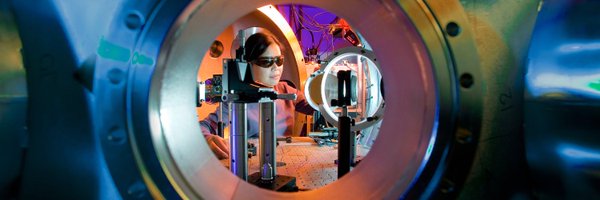 (AGENPARL) - Roma, 28 Ottobre 2022
(AGENPARL) - Roma, 28 Ottobre 2022(AGENPARL) – ven 28 ottobre 2022 A weekly compendium of media reports on science and technology achievements at Lawrence Livermore National Laboratory. Though the Laboratory reviews items for overall accuracy, the reporting organizations are responsible for the content in the links below.
LLNL Report, Oct. 28, 2022
El Capitan will be the National Nuclear Security’s first exascale supercomputer.
[Scaling El Capitan’s potential](https://www.hpcwire.com/off-the-wire/llnl-scientists-anticipate-el-capitans-potential-impact/)
While Lawrence Livermore is eagerly awaiting the arrival of its first exascale-class supercomputer, El Capitan, physicists and computer scientists running scientific applications on testbeds for the machine are getting a taste of what to expect.
“I’m not exactly sure we’ve wrapped our head around exactly about how much compute power [El Capitan] is going to have, because it is so much of a jump from what we have now,” said Brian Ryujin, a computer scientist in the Applications, Simulations, and Quality (ASQ) division of LLNL’s Computing directorate. “I’m very interested to see what our users will do with it, because this machine is going to be simply enormous.”
Ryujin is one of the LLNL researchers who are using the third generation of early access (EAS3) machines for El Capitan — Hewlett Packard Enterprise (HPE)/AMD systems with predecessor nodes to those that will make up El Capitan — to port codes over to the future exascale system. Despite being a mere fraction of the El Capitan’s size and containing earlier generation components, the EAS3 systems rzVernal, Tenaya and Tioga currently rank among the top 200 of the world’s most powerful supercomputers. All three contain HPE Cray EX235a accelerator blades with 3rd generation AMD EPYC 64-core CPUs and AMD Instinct MI250X accelerators, identical nodes to what comprises the Oak Ridge National Laboratory’s Frontier system that holds the No. 1 spot on the Top500 List and the title of the world’s first exascale system.
[Read More](https://www.hpcwire.com/off-the-wire/llnl-scientists-anticipate-el-capitans-potential-impact/)
Vertically aligned carbon nanotubes growing from catalytic nanoparticles (gold color) on a silicon wafer on top of a heating stage (red glow). Diffusion of acetylene (black molecules) through the gas phase to the catalytic sites determines the growth rate in a cold-wall showerhead reactor. Image by Adam Samuel Connell/LLNL.
[Carbon nanotubes are where it’s at](https://www.nanowerk.com/nanotechnology-news2/newsid=61703.php)
Lawrence Livermore scientists are scaling up the production of vertically aligned single-walled carbon nanotubes (SWCNT) that could revolutionize diverse commercial products ranging from rechargeable batteries, automotive parts and sporting goods to boat hulls and water filters.
Most CNT production today is used in bulk composite materials and thin films, which rely on unorganized CNT architectures. For many uses, organized CNT architectures such as vertically aligned forests provide important advantages for exploiting the properties of individual CNTs in macroscopic systems.
“Robust synthesis of vertically-aligned carbon nanotubes at large scale is required to accelerate deployment of numerous cutting-edge devices to emerging commercial applications,” LLNL scientist Francesco Fornasiero said. “To address this need, we demonstrated that the structural characteristics of single-walled CNTs produced at wafer scale in a growth regime dominated by bulk diffusion of the gaseous carbon precursor are remarkably invariant over a broad range of process conditions.”
[Read More](https://www.nanowerk.com/nanotechnology-news2/newsid=61703.php)
LLNL engineer Vincent Riot (left), who has worked on the LSST for more than a decade and has been the full camera project manager since 2017, and LLNL optical engineer Justin Wolfe, the camera optics subsystems manager, stand in front of the LSST main lens assembly.
[Keeping an eye on the sky](https://drive.google.com/file/d/14tXP3M0ZV3-aMWdA4mz6hzKci4uWXWIZ/view)
The goal of the Vera C. Rubin Observatory project is to conduct the 10-year Legacy Survey of Space and Time (LSST). LSST will deliver a 500-petabyte set of images and data products that will address some of the most pressing questions about the structure and evolution of the universe and the objects in it. Scientists will use the 3,200 megapixel camera to help understand the mystery of dark matter and dark energy.
LLNL scientists were instrumental in designing and building the lens. LLNL scientist and LSST project manager Vincent Riot said the camera will be able to generate data for dozens of generations and after a year or so it may take more images than all the images ever taken by other telescopes and cameras.
[Read More](https://drive.google.com/file/d/14tXP3M0ZV3-aMWdA4mz6hzKci4uWXWIZ/view)
The hexagonal polytype of diamond called Lonsdaleite has been observed in shock compressed material after meteorite impacts.
In new experiments, Lawrence Livermore scientists have emulated the conditions of Lonsdaleite, a diamond formation, using picosecond time scale laser compression and observed the transition with state-of-the-art materials characterization using femtosecond X-ray pulses. This graphite-diamond phase transition is of particular interest for fundamental reasons and a wide range of applications.
The observation of Lonsdaleite subsequent to shock compression has been a persistent mystery, including debate over whether hexagonal diamond exists as an extended structure, or is cubic diamond with defects. Previous studies of the phase transition of graphite to diamond or Lonsdaleite under moderate shock compression support a diffusionless mechanism for the phase transition, but these studies did not observe atomic structure through the transition, so the transformation mechanism was not revealed.

